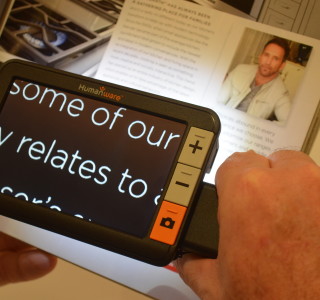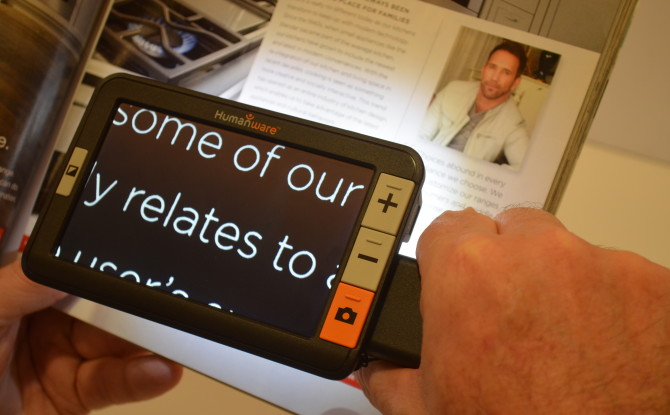
How Do People Who Are Blind Or Visually Impaired Read Printed Text?
September 15, 2016
Reading is part of everyone’s life. From looking at bills and letters to enjoying magazines and books during our free time, we read every single day. Unfortunately, not everything is printed in Braille or audio format for people like me who cannot see. From assistive technology that scans and reads print out loud, to organizations that provide books, newspapers and magazines in audio or Braille formats free of charge, there are numerous ways of accessing print materials. The following are just a few of those methods people with vision loss use to access printed text.
Recorded Book Collections
People living in the United States can take advantage of The Library of Congress’s National Library Service for the Blind and Physically Handicapped, or Learning Ally. Both services provide a collection of thousands of audio recorded books, magazines and periodicals to qualifying individuals with print disabilities. The BookShare website also provides a broad collection of books in different audio and electronic formats. Subscribers can listen by using special software and audio players, or on their smartphones and tablets by downloading the mobile apps offered by each provider (click on the links for more information.)
Assistive Technology
Tools like the BookPort and Victor Reader are portable devices that can serve many purposes. These often include an audio player, digital recorder, radio and can even read text files. Newer versions can also connect to the Internet, and users can listen to online radio stations or instantly download audio books onto the devices.
OCR, or optical character recognition, allows people to scan books, letters and other materials. Once a page is scanned, the OCR software or device begins reading the text out loud. To me, this technology comes in handy when reading letters or other literature I get in the mail, for example. Most OCR devices consist of a camera – which takes a picture of the text – and text to speech software. New tools like the OrCam allow users to instantly scan and read letters, books, etc. There are also Smartphone apps that can scan and read print materials out loud. You can see and purchase the latest in assistive technology in our Tools for Living Store.
EBook Readers
Amazon’s Kindle and Barnes & Noble’s NOOK are some of the most popular EBook readers in the market. Users can purchase books from the respective websites, and begin reading them in a matter of seconds. The accessibility of these devices for people with vision loss is constantly improving (previously, users with limited vision could not navigate through the various menus). Both devices also offer iOS and Android apps, which are accessible to people with visual impairments.
Other smartphone and tablet apps, like iOS’s iBooks and Android’s Google Play Books are also quite accessible. Users can easily navigate by page, chapter, etc. using their phone’s or tablet’s screen-reading software. These apps can come in handy when a book is not available in audio from other sources. There are numerous other accessible apps for reading books.
Accessing Newspapers and Magazines
Reading the day’s newspaper has now become easier for people with visual impairments thanks to modern technology and resources. The Chicago Lighthouse’s CRIS Radio provides daily readings of popular newspapers like The Chicago Tribune, Chicago Sun Times, Washington Post and New York Times. Users who are blind or otherwise cannot read print because of a disability can tune in via a special receiver, and by listening by phone or online.
The NFB NewsLine provides audio versions of daily newspapers and magazines to people who are blind or visually impaired throughout the United States. Publications range from daily magazines and newspapers to weekly sales circulars for various stores. Subscribers can listen to the publications online, with the NFB NewsLine app, by phone and on devices like the Victor Reader.
What other methods do you use to read and access print text as someone who is blind or visually impaired? We’d love to hear from you!
 Sandy Murillo works at The Chicago Lighthouse, an organization serving the blind and visually impaired. She is the author of Sandy’s View, a bi-weekly Lighthouse blog about blindness and low vision. The blog covers topics of interest to those living with blindness and vision impairments. Being a blind journalist and blogger herself, Sandy shares her unique perspective about ways to live and cope with vision loss.
Sandy Murillo works at The Chicago Lighthouse, an organization serving the blind and visually impaired. She is the author of Sandy’s View, a bi-weekly Lighthouse blog about blindness and low vision. The blog covers topics of interest to those living with blindness and vision impairments. Being a blind journalist and blogger herself, Sandy shares her unique perspective about ways to live and cope with vision loss.






